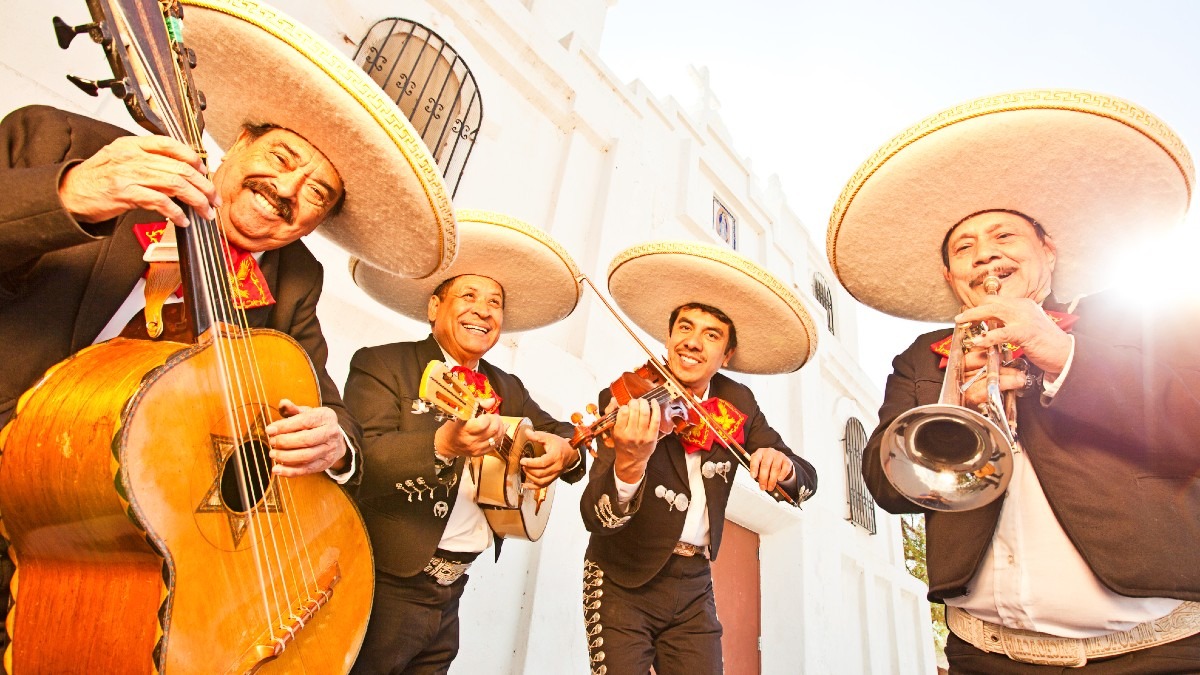Guzman y Gomez: The IPO of 2024 so far might look cheerful but cheap, it is not

Via Getty
The initial public offering of Mexican themed fast food chain Guzman y Gomez went off like a rocket on Thursday morning.
The trimmed offer size pretty much ensured there was strong demand for the available stock which straight off the bell traded in a range of $29.50 and $30.99, surging 36% to end Thursday’s debut session at $30.
That handsomely eclipsed the company’s $22 per share issue price and helped Guzman y Gomez (ASX:GYG) to a Thursday night valuation of more than $3bn up from $2.25bn when the session began.
But there’s a bear in there.
Morningstar’s Johannes Faul who initiated coverage of Guzman y Gomez with a fair value estimate of $15 per share, told Stockhead that in the fast food game, GYG might be cheerful, but it certainly isn’t cheap.
“Our fair value estimate for Guzman is $15 per share. Against this, the $22 offer price is too high.”
Guzman looks expensive

Morningstar reckons the market takes a different view on Guzman’s long-run prospects—namely, how long the company can keep building stores that generate excess returns. Granted, Guzman’s Australian restaurant economics are very attractive now.
“We expect this to support a brisk store rollout for the next decade, averaging 40 net new stores per year. But longer term, we think the potential growth from new stores will be depleted.
“To arrive at market pricing, we would need to fully bake in management’s long-term ambition to reach 1,000 stores in Australia and assume Guzman achieves mid-cycle store operating margins at its target range of 20%, up from guidance of 17% in fiscal 2024.”
Inside the burrito
It’s been built up nicely and the pickings have been slim, so GYG’s debut has certainly been one of the most anticipated ASX listings in many, many moons and the timing was sublime – Guzman y Gomez has been on a bit of a growth tear.
In a little under a decade, the Mexican-inspired quick service restaurants (QSR) chain has almost quadrupled its Australian store count, to 183 at the end of 2023 from 53 in 2014.
Restaurants in the QSR industry are distinguished from other restaurant formats by their focus on convenience, consistency, speed of service and value-for-money.
And taste, but that’s not in the dictionary definition. As evidenced by my Burger King across the road.
Over the same period, Euromonitor estimates Guzman’s share of Australian QSR sales has increased to 2% from 0.5%.
Guzman at a glance
-
GYG’s has 210 stores, primarily franchised (70%) with a target of 1000 stores in 20 years, putting it on a run rate of ~40 stores pa
-
GYG did sales of $A780m last year, though only $340m comes back to the parent (given franchise model)
-
GYG is growing sales at ~30%, however, scale is the key to margins which will drive future earnings
-
GYG is not profitable yet and GYG shares sold in the IPO at 7x revenue
Speedy growth, but still a mouse among men
The Australian QSR market is highly fragmented says Morningstar analyst Johannes Faul.
The five largest brands by turnover—McDonald’s, KFC, Hungry Jack’s, Domino’s, and Subway—collectively represent around one half of industry sales.
Established back in 2005, Guzman is still a relatively young brand when compared with the bulk of Morningstar’s restaurant coverage, not to mention the larger players in the Australian QSR market.
Domino’s Pizza Enterprises (ASX:DMP) started operating in 1983 and is managed by master franchisee Domino’s Pizza Enterprises.
Yum! Brands’ KFC started in Australia in 1968 – Collins Foods (ASX:CKF) is a franchisee. The big fast food fella with the largest store counts, Subway and McDonald’s, started in 1988 and 1971, respectively.
Guzman aims to expand its Australian network to more than 1,000 stores, Johannes notes. He says this ambitious goal reflects the company’s estimate of three-kilometre catchments serving a population of 30,000.
“A network of this size would be broadly comparable to McDonald’s Australian footprint today.”
Australia’s QSR market is ‘highly Fragmented’

Johannes explains Guzman has had a good at positioning itself as a youth-focused health-conscious QSR brand.
“As a result of its premium offering, average spend per transaction is around 15% higher than major QSR peers. We estimate that average unit volumes of around $4 million per store, a key determinant of restaurant profitability, are close to best-in-class QSR peers McDonald’s and KFC in Australia.”
By turnover, Guzman is the country’s No. 6 QSR brand in the kind of fragmented market which provides plenty of opportunity to consolidate.
Australian QSR market (by sales)

Guzman operates a hybrid store ownership model, running corporate-owned restaurants and licensing its brand to franchisees. The company expects around one third of stores will be corporate-owned by the end of fiscal 2024, approaching 40% over the long run.
The vast majority of stores are in Australia, but Guzman also has a, well ,it’s more of a nascent presence in Singapore and Japan through a master franchisee agreement.
It’s in the states, but so is Mexico and GYG boasts only a handful of corporate stores in the US.
Rolling out stores under a franchise model significantly reduces Guzman’s capital investment and funding needs. Franchisees are responsible for new-store capital expenditure and ongoing maintenance. In return for use of its brand and operating model, Guzman collects a royalty fee.
The royalty rate flexes with store turnover and averaged about 8% of global franchisee sales in fiscal 2023, according to Morningstar.
“This is a higher royalty rate than KFC-franchisee Collins Foods (ASX:CKF) s pays to Yum! Brands. However, after adjusting for other fees, we estimate a franchisee’s total payments to the brand owners, as a share of sales, are on par.
The more capital-intensive corporate stores provide Guzman with greater control over customer experience and serve as a testing ground for new ideas.
“While the mix of franchisee to corporate stores varies widely across global QSR franchisors and between jurisdictions, lowering the share of corporate stores in the portfolio below the 40% we forecast could free up cash to be either reinvested or returned to shareholders.”
Promising early signs
Despite a strong brand presence in Australia, Guzman has yet to carve out a (Morningstar*) economic moat – the safety of market dominance – because:
- The restaurant space is highly competitive
- Switching costs are nonexistent for patrons
- Barriers to entry are relatively low.
Those restaurants which do manage to carve out a durable competitive advantage, Johannes says, typically do so by building intangible brand assets and cost advantages through scale.
“Guzman’s market share has grown rapidly, supported by its store rollout and strong same-store sales growth. But there is some uncertainty around the company’s long-term ambitions. Healthy-store-level economics are crucial for Guzman’s corporate stores and for franchisee willingness to invest behind the Guzman brand.
“The company needs its target store economics to hold to roll out its ambitious new-store plan.”

International expansion likely tough
Johannes also fears Guzman’s international operations are looking more challenged.
“Restaurants in Japan and Singapore are included in the Australian segment, with little capital tied up in these jurisdictions, as they operate under a master franchise agreement, representing about 2% of EBITDA at mid-cycle.
“The US stores are currently loss-making, and we are not expecting them to turn a profit in our explicit forecast period.
“We think Guzman is likely to struggle to achieve a meaningful presence in the US against well-established and strong competitors both within the Mexican niche, like wide-moat Chipotle, and QSR in general, like wide-moat McDonald’s,” Johannes says.
Guzman wants to go from roughly 180 Australian locations today to 1000 in twenty years – circa what McDonald’s has locally today.
“A key variable here will be how the profits and sales of each location hold up as Guzman network becomes more saturated. This is vital because it affects how attractive the business remains to potential franchisees, AKA the least capital intensive and most profitable source of future growth,” Johannes says.
Morningstar’s take is that Guzman could open around 40 stores a year for the next decade and maintain healthy store economics.
Beyond this, the view from Johannes’ desk is that things could get tougher.
1000 stores in the long-run doesn’t look impossible but Morningstar isn’t willing to price this growth into their valuation.
Guzman’s recent history is promising
Return on invested capital (“ROICs”) trail weighted average cost of capital (“WACC”) in the initial forecast years as capital is invested today, both in new stores and investments in supporting infrastructure and administrative capacity, but earnings take some time to catch up as new stores ramp up.
“We forecast average ROICs over the next five years of about 7%—below our 9% WACC estimate. Double-digit Australian same store sales growth for the past five years compares favourably with Domino’s Pizza Enterprises (ASX:DMP) and Collins in the single digits.
“This strong growth has supported stable same-store margins in the high teens over the past three years… but we believe most of the easy tweaks have been exhausted.”
Morningstar’s valuation is well below the offer price
“Our fair value estimate for Guzman is $15 per share. Against this, the $22 offer price is too high.
“Our fair value estimate implies an adjusted fiscal 2025 EV/EBITDA ratio of 26, and a P/E ratio of 250.
The critical focus for Morningstar is that while Guzman’s valuation multiples look excessive on fiscal 2025 earnings compared with peers, they reflect the earlier stage of Guzman’s rollout story.
“We see Guzman differently (now), with the story centred on rapid growth, and strengthening and monetising an emerging brand.
Rolling Morningstar’s fair value estimates forward by a decade to capture a tripling of Guzman’s global footprint from fiscal 2023, the difference in adjusted EV/EBITDA multiples fades in the race between the local QSR names.
“Guzman’s fiscal 2033 EV/EBITDA multiple of 9 is broadly in line with Domino’s at 8, with both still ahead of Collins Foods at 6.
“Collins Foods is leveraged to the more mature KFC brand, and we think this means it has fewer long-term growth prospects. Guzman’s higher multiple relative to Domino’s reflects some of the remaining rollout potential after our explicit forecast period, with the 1,000 Australian store target in two decades’ time almost twice the 570 stores we forecast by fiscal 2033.
Johannes says he sees more-attractive valuations in Australian QSR peers DMP and CKFs both trading at discounts of around 40% to our his value estimate.
“We think the market is under appreciating the ability of both companies to meaningfully expand operating margins in the near term, as input cost pressures subside on stabilising food commodity prices, and consumer demand picks up—fuelled by fiscal stimulus and rising incomes.”

UNLOCK INSIGHTS
Discover the untold stories of emerging ASX stocks.
Daily news and expert analysis, it's free to subscribe.
By proceeding, you confirm you understand that we handle personal information in accordance with our Privacy Policy.








